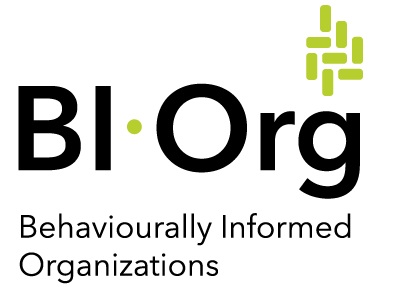Interaction Architecture
The idea
Interaction architecture refers to the formal and informal social encounters that structure the flow of resources in an organization.
The benefit
By harnessing an organization’s interaction architecture, leaders can a) design more effective strategies, b) resolve chronic problems, and c) create more enjoyable, productive workplaces.
Introducing Interaction Architecture
Laura Doering, Associate Professor of Strategic Management (U. Toronto, Rotman School) and BEAR Research Fellow, introduces a new framework for seeing, understanding, and harnessing interactions as a strategic tool.
Leaders spend a lot of time crafting strategic plans. They carefully outline the policies and practices they hope will enhance their organizations. But at the end of the day, successful strategy implementation depends on people interacting with other people. Leaders tend to devote less time and attention to the interpersonal interactions through which strategies are executed. Instead, they often assume these moments of social exchange follow naturally from strategic aims. But if strategies are roadmaps that signal where leaders want to go, then interactions are the social vehicles by which those plans come to life.
Interaction architecture is a new framework for seeing, understanding, and harnessing interactions as a strategic tool. It helps leaders recognize the often-invisible social patterns that govern what people know, who they know, and how they do their work. Just as a building’s architecture shapes how people move through physical space, an organization’s interaction architecture structures how people share information, complete tasks, and build relationships. Interaction architecture is made up of “touchpoints”: repeating interactions during which valuable resources — like money, information, and power — get distributed. Touchpoints are social encounters, like formal meetings or informal gatherings, where leaders, employees, clients, and other stakeholders access important resources. Alter these touchpoints, and you alter the organization’s very foundations.
Leaders benefit from understanding interaction architecture in three key ways. First, they can design more effective strategic plans by considering and accounting for the role of interactions. Second, leaders can resolve chronic problems. Because many seemingly-intractable challenges are rooted in social interactions, leaders can better address problems by targeting the interactions for change. Third, leaders can use interaction architecture to identify and amplify positive interactions. In doing so, they can create more enjoyable, productive environments for employees, clients, and stakeholders, potentially increasing retention and engagement.
1) design more effective strategic plans
2) resolve chronic problems
3) identify and amplify positive interactions
Collaborate
Let us know if you think this could be applied in your organization!
E-mail: rotmanbiorg@rotman.utoronto.ca





